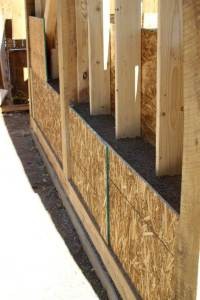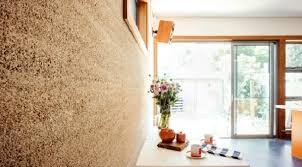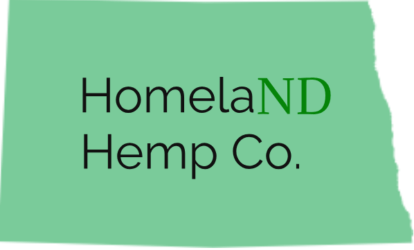Hempcrete-All You Need to Know
Brought to you by Matt Marino with Homeland Hemp Company in Bismark, North Dakota this article gives you an excellent introduction into why building with Hemp will provide self-sustainability for our planet and improve the health of our people and planet. Support his company by purchasing Sample DIY Kits, and Hempcrete Art on HempforHealthcare.com
Hempcrete-All You Need to Know
Hempcrete is a building material made from hemp hurds, lime, and water. It is quickly gaining popularity in the US and for good reason. Hempcrete is a renewable and sustainable building material that it is better for the environment, and human & pet health.
How Long Has Hempcrete Been Used?
Hempcrete is not new. Researchers have traced Hempcrete use all the way back to the 6th century. More recently in our history, however, European countries have been using Hempcrete to restore old buildings as well as build new ones for over 20 years. In the US we are just getting started with hempcrete building because industrial hemp was illegal on a federal level until the end of 2018. There is a wealth of knowledge about building with hempcrete but not much has changed in the past few decades, so I am anticipating the next 5-10 years to be filled with hempcrete innovation.
How to Build with Hempcrete
Building with hempcrete is a relatively simple process. There are 3 ingredients: hemp hurd (woody core from the stalk), lime-based binder, and water. Contrary to what some people think, hempcrete is not load-bearing, meaning you need to build a wood frame prior to placing the mix. Until we can create Hempwood we must use a tree wood frame. After a simple wood frame has been put in place temporary shuttering is put in place to help shape the walls. A majority of the time the wood frame will be buried within the wall meaning so we will use spacers to create the gap on either side of the wood frame. Once the gap has been created and the shuttering is in place (usually made from OSB paneling) we can start to fill the void within the wall with hempcrete! Depending on the lime binder being used within the mix you can typically remove the OSB shuttering forms in about 30 minutes allowing the hempcrete to begin its curing process.
Breaking the Mold
We have become comfortable with a cycle of innovation and continuous improvement, but it has come at a cost. There have been huge efforts to move toward eco-building and efficient materials but a majority of these are over complicated and end up having long term negative side effects on our planet and our health. One of the main concerns I have with the modern building practices is that the goal in building these days is to create an impermeable seal so nothing can get in or out. The problem with this is that everything inside is man-made and not beneficial for our health. A majority of the materials used to build a house release VOCs into the air. The primary product people think of when VOCs are mentioned is paint but that is just the tip of the iceberg. What's the problem with VOCs? Our own government agencies have confirmed that they have negative effects on our health, but the severity is unknown. So, for now, most companies just need to put warnings on the labels that tell you not to breathe without a respirator while using the material until it is dry, giving time for most of the VOCs can evaporate. However, recent studies have shown that VOCs continue to leach into the air for up to 6 years! Now back to my earlier point about building standards create a sealed indoor environment, this seems like a bad combo, doesn't it? Considering most humans spend 90% of their time or more indoors we are putting ourselves in an unhealthy environment without even realizing it.
So, can hempcrete help? First off, it's a natural product and there are no negative health side effects from being in contact with the material once it has been cast into the wall. The other piece is that hempcrete is breathable. It allows fresh air from outdoors to seep into the interior over time allowing fresh air to continuously cycle through the building. This in turn creates a much healthier interior environment.
Benefits of Building with Hempcrete
Hempcrete is not just better for the environment and our health, it is also a superior building material in several ways which makes choosing it as part of a home or office building a no brainer. Here are some of the highlights:
- Humidity Control- Hempcrete is highly hygroscopic meaning that it absorbs humidity from the air. This is a good thing! Hempcrete has the ability to hold and shed moisture depending on the weather and climate so when there is a lot of moisture in the air the walls will absorb and hold moisture, when humidity is low the walls begin to shed moisture. This creates a very consistent and comfortable humidity level for the interior throughout various weather cycles while also prevent condensation and the chance for mold.
- Monolithic Design- Because hempcrete is cast in a wall it creates a monolithic or continuous, structure which means there is little to no thermal bridging ("cold spots"). You get consistent insulation and seal from pests and the outdoor elements.
- High insulation value and thermal mass- With hempcrete, there is no need for any other layers within your walls, including insulation, because that is what hempcrete does best. Hempcrete has the ability to absorb heat and dissipate it over a longer period of time, so during the day the walls will absorb heat and by nighttime it will have just begun to start releasing that heat to the interior to keep you warm all night. This is also great because it eliminates the need for robust HVAC systems in your home which will save you money.
- Fire/Bug/Mold Resistant- Lime has natural fire-resistant qualities and when cast and cured in the hempcrete mix the walls become highly fire resistant with the ability to resist flame for several hours. Again, thanks to the lime, hempcrete homes see little to no bugs, including mites! The mold-resistant aspect is attributed to the hemp hurd and as mentioned early, hempcrete is hygroscopic and it has the ability to regulate its humidity levels and shed excess moisture when over-saturated.
Disadvantages of Hempcrete Use
This section will be brief. There are not many disadvantages to hempcrete, but I came up with two that are worth mentioning. The first is the fact that hempcrete is not load-bearing. This is not a deal-breaker for me personally, but some people ask how it is so great if it cannot replace concrete. I don't think hempcrete is to be used to replace concrete, I think it is to be used as its own unique building technique to compete more with the traditionally built homes. (And I don't think concrete should be used to build homes)
The other downside to hempcrete is temporary, and that is cost and sourcing. To build a house with hempcrete you are going to pay slightly more upfront. This is because, like many products from hemp, the supply chain is not quite established yet. A majority of builders are still sourcing their hemp hurd from Europe which adds a lot of extra cost with no value-added. This will absolutely change within the next 1-2 years.
Long Term Sustainability
A final point that I think makes the strongest case for using hempcrete for building materials is that it is carbon negative. How is this possible? While hemp grows it absorbs an abundant amount of carbon from the air, approximately 4 times more than the same area of trees. After it is harvested, broken down for hempcrete, then mixed and then cast into a house, it continues to absorb CO2 for up to 100 years!
Natural is better for us and for our planet. Growing and innovating with sustainability and renewability as our foundation will lead to long term success, not just for us but for generations to come.
Visit https://homelandhempco.com/ for more consulting advice on how to build with Hemp and plan out larger projects! Please #buyhemp on HempforHealthcare.com to support the initiative to build Hemp Houses for the Homeless!
When you subscribe to the blog, we will send you an e-mail when there are new updates on the site so you wouldn't miss them.
| FDA Disclaimer |
| Important Disclaimer: The information contained on this site is intended for informational and educational purposes only. Any statements made on this website have not been evaluated by the FDA and any information or products discussed are not intended to diagnose, cure, treat or prevent any disease or illness. Please consult a healthcare practitioner before making changes to your diet or taking supplements that may interfere with medications. Any medical information published on this website is not intended as a substitute for informed medical advice and you should not take any action before consulting with an informed healthcare professional. |




Comments